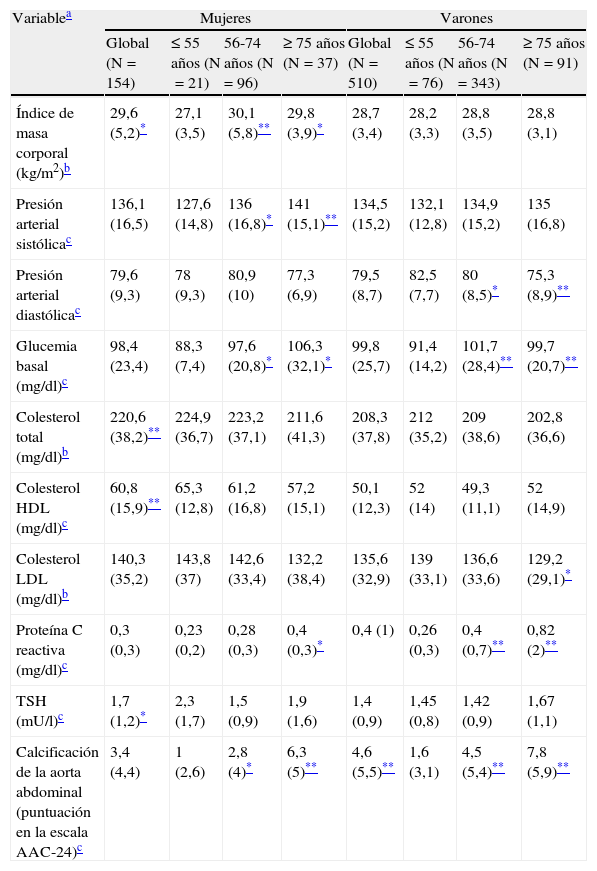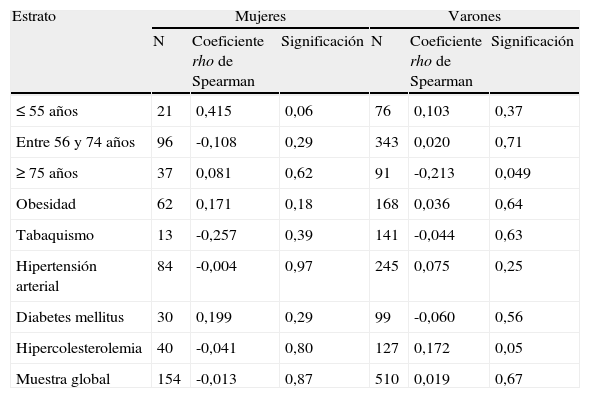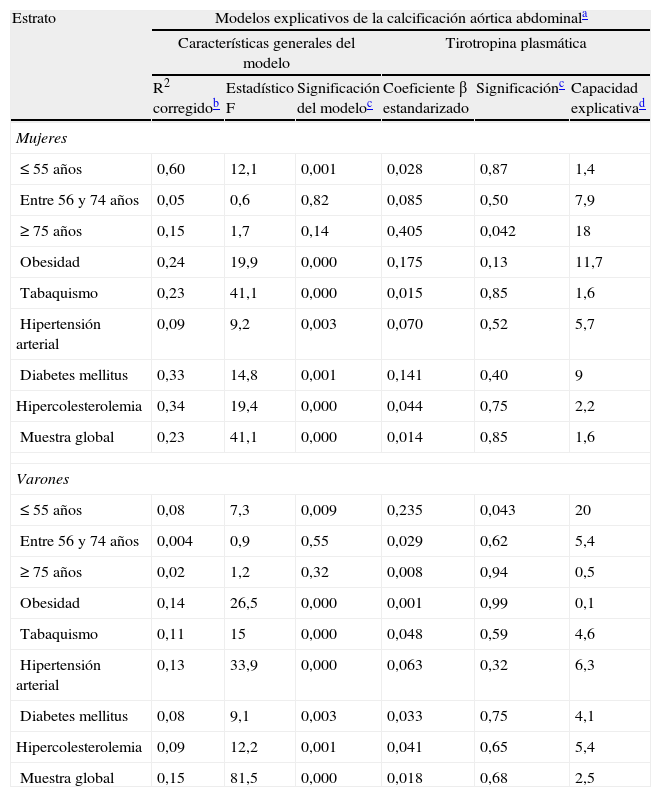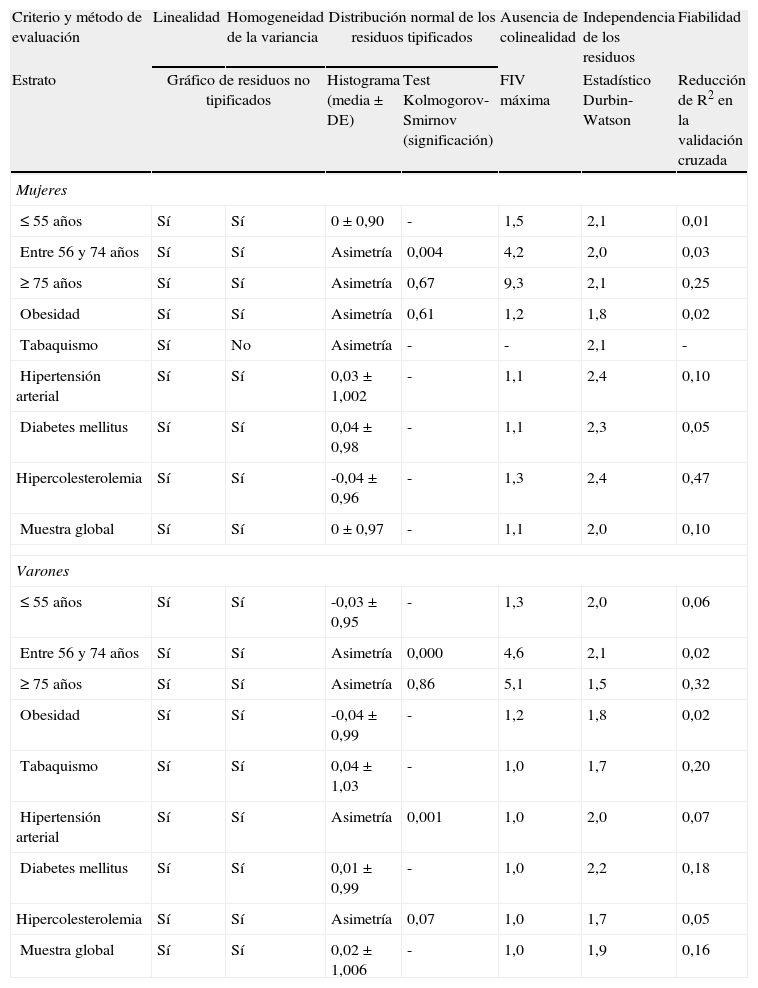La edad parece modificar la relación entre el hipotiroidismo y la enfermedad cardiovascular (ECV). Si bien en sujetos muy ancianos el hipotiroidismo se ha asociado a longevidad, en las personas de ≤65 años el hipotiroidismo subclínico parece relacionarse con un mayor riesgo cardiovascular (RCV). El objetivo del estudio ha sido conocer la capacidad explicativa de la tirotropina plasmática (TSHp) para la ECV en diferentes estratos de edad (≤55, 56-74, ≥75 años), sexo y factores de RCV.
Pacientes y métodoUn total de 664 varones y mujeres son diferenciados en 18 estratos. Mediante regresión lineal múltiple se elaboran los 18 modelos explicativos. La variable dependiente es la calcificación aórtica abdominal (CAA), según la escala AAC-24. Las variables independientes son: TSHp, edad, hábito tabáquico, índice de masa corporal, presión arterial sistólica, presión arterial diastólica, glucemia basal, colesterol total, colesterol unido a lipoproteínas de alta densidad, colesterol unido a lipoproteínas de baja densidad y proteína C reactiva.
ResultadosLa edad es la principal variable explicativa de CAA. El mayor valor del coeficiente β estandarizado de la TSHp se observa en varones≤55 años (β=0,235, p=0,043) y en mujeres≥75 años (β=0,405, p=0,042). Al incrementarse la edad, la capacidad explicativa de la TSHp para la CAA aumenta en las mujeres y disminuye en los varones. En varones≥75 años hay una correlación negativa entre TSHp y CAA (rho-Spearman=-0,213, p=0,049).
ConclusionesSe observa una asociación positiva entre la TSHp y ECV en varones≤55 años y en mujeres≥75 años. La combinación de la regresión múltiple y el análisis estratificado ha mostrado la compleja influencia de la edad en la relación entre ambas variables.
Age seems to modify the relationship between hypothyroidism and cardiovascular disease (CVD). Although hypothyroidism in very elderly subjects has been associated with longevity, subclinical hypothyroidism in people≤65 years seems to be related with an increased cardiovascular risk (CVR). The aim of this study was to determine the explanatory power of plasmatic TSH (pTSH) for the CVD, in different strata determined by age (≤55, 56-74, ≥75 years), sex and CVR factors.
Patients and methodsSix hundred and sixty-four men and women were differentiated into 18 strata and their explanatory models were developed using the multiple linear regression analysis. The dependent variable is the abdominal aortic calcification (AAC) according to the AAC-24 scale. The independent variables are: pTSH, age, smoking, BMI, SBP, DBP, fasting glucose, total cholesterol, HDL-cholesterol, LDL-cholesterol and C-reactive protein.
ResultsAge is the main explanatory factor of AAC. The highest explanatory value of the β-standardized coefficient of the pTSH is observed in males≤55 years (β=0.235, P=.043) and in females≥75 years (β=0.405, P=.042). With increasing age, the prediction power improves in women and decreases in men. In men≥75 years there is a negative correlation between pTSH and AAC (rho-Spearman=-0.213, P=.049).
ConclusionsA positive association is observed between pTSH and CVD in males≤55 years and in women≥75 years. The combination of multiple regression and the stratified analysis shows the complex influence of age in the relation between both variables.
Artículo
Comprando el artículo el PDF del mismo podrá ser descargado
Precio 19,34 €
Comprar ahora











